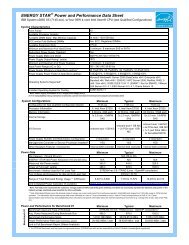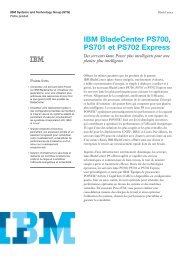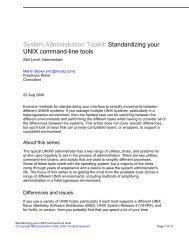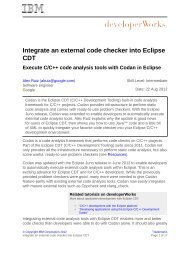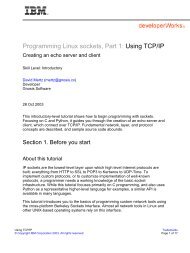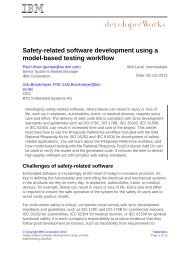TEC Workbook - IBM
TEC Workbook - IBM
TEC Workbook - IBM
You also want an ePaper? Increase the reach of your titles
YUMPU automatically turns print PDFs into web optimized ePapers that Google loves.
3.2.7 Verifying the request signature and signing the response<br />
In the next steps, you’ll modify the ProductServiceProxy Multi-Protocol Gateway to verify the digital<br />
signature sent by soapUI, and to put a digital signature on the response sent back to soapUI.<br />
__1. In the search field above the navigation tree, type the word multi.<br />
__2. In the search results, locate and click on: Edit Multi-Protocol Gateway<br />
__3. Select ProductServiceProxy from the list.<br />
__4. As you’ve done before, open the policy editor window by clicking on the ellipsis in the<br />
Multi-Protocol Gateway Policy field.<br />
3.2.8 Verify the request’s digital signature<br />
__1. Drag a Verify action onto the processing rule after the match action.<br />
__2. Double click the yellow outlined verify action to complete its configuration.<br />
<strong>IBM</strong> Software<br />
__3. In the Validation Credential field's dropdown list, select: ProductdSvcConsumersValcred. This<br />
validation credential contains soapUI’s public certificate which will be used when verifying the<br />
digital signature.<br />
__4. Click Done.<br />
In the following steps, you'll add a transform action that will strip off the digital signature that soapUI<br />
created. This is not required, but is often done in order to reduce the overall message size. WebSphere<br />
DataPower appliances come with a library of pre-built stylesheets that perform various useful tasks such<br />
as stripping a digital signature. These pre-built stylesheets can be found in the store: directory.<br />
Lab 3 - Securing XML Message Content using WS-Security Page 57




